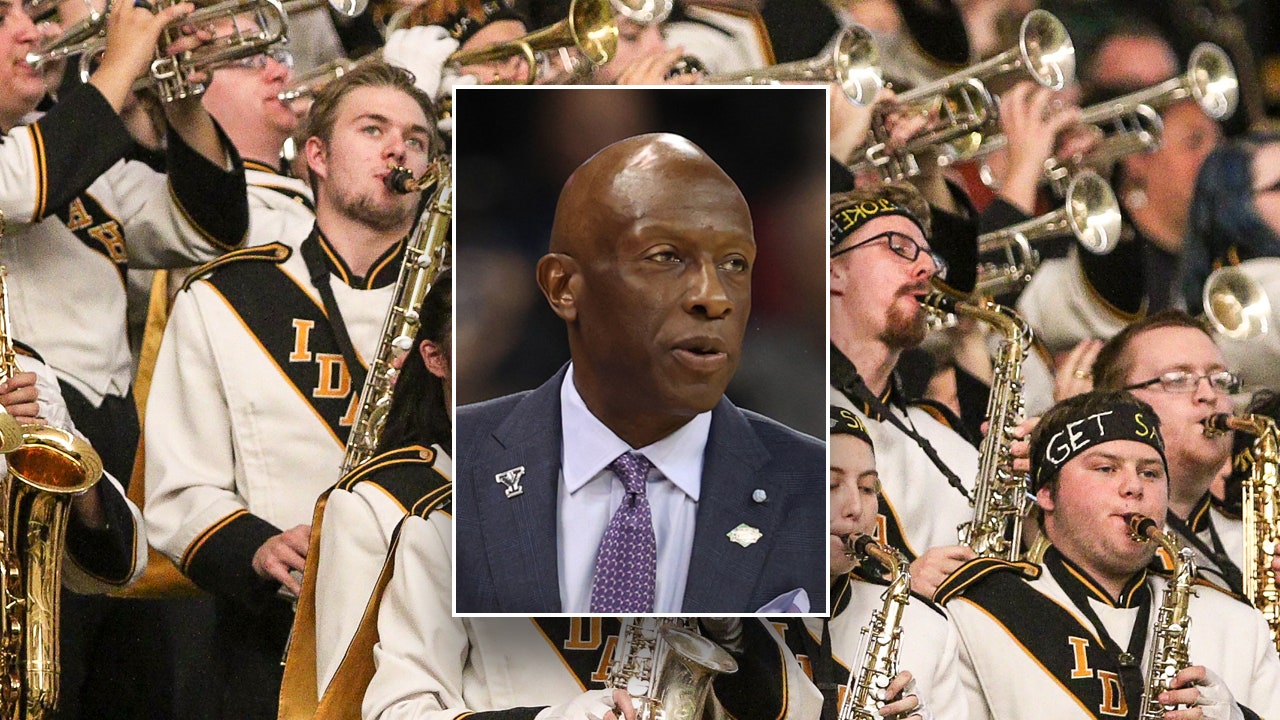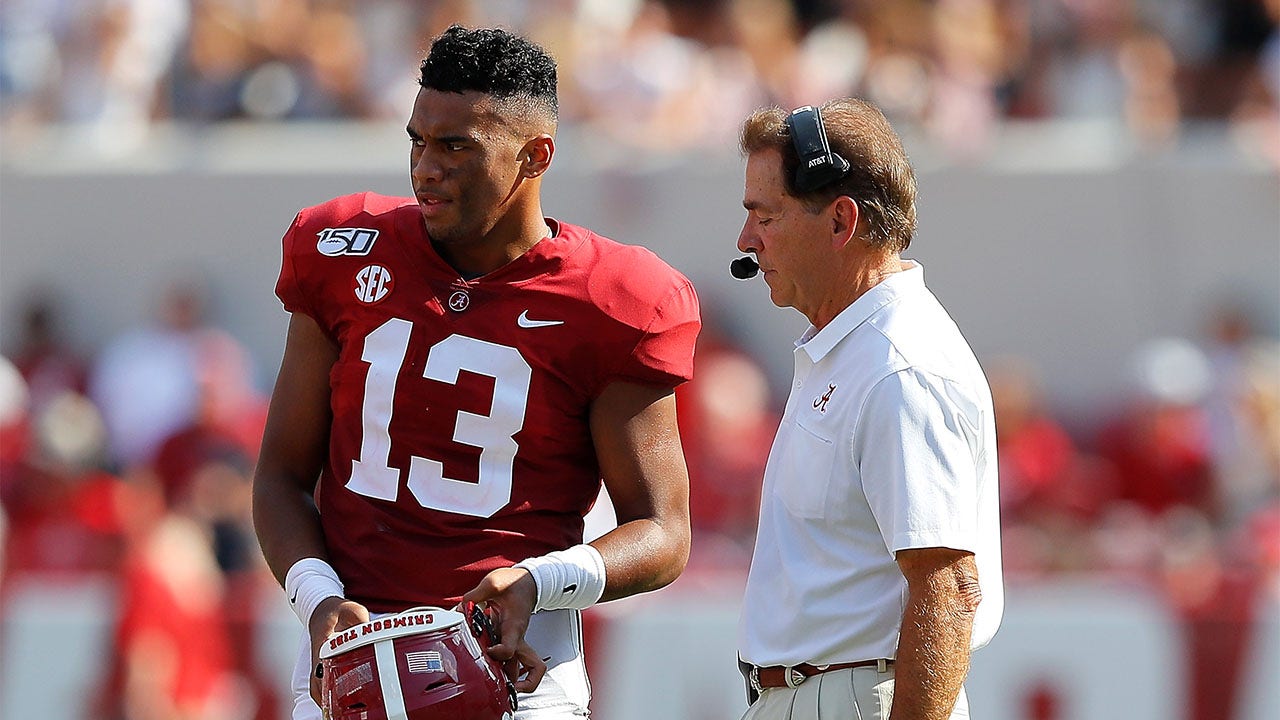American soccer has dealt with two high-profile instances of extreme weather disrupting professional games in the last week. In both cases, despite conditions making it impossible to play at anything close to normal, the games went on.
The most recent of the two happened on Wednesday, when steady and heavy rains flooded the field at Snapdragon Stadium in San Diego, Caif. before the U.S. women’s national team’s Gold Cup semifinal match against Canada. Conditions meant the ball could not travel on the ground farther than a couple of feet in most parts of the field, which played a direct role in the United States’ opening goal.
JAEDYN SHAW RIDING THE STORMMMM 🔥🤩 pic.twitter.com/0gq2tkR2sa
— Attacking Third (@AttackingThird) March 7, 2024
“It was honestly insane,” Shaw said. “We had such a good warmup … the ball was moving really fast, and we were excited to just play and have a really intense game, and then we came back out and we were like, ‘What’s happening?’”
Asked if the game should have been played, USWNT interim head coach Twila Kilgore said, “Probably not.”
The previous Saturday, an MLS match between Real Salt Lake and Los Angeles FC was similarly affected, but by a different form of precipitation. That game, which was held at America First Field in Sandy, Utah, was delayed first by high winds and then again shortly after kickoff by lightning. Once the game began in earnest, snow had started to fall, resulting in accumulation of up to four inches and whiteout conditions by the end of Salt Lake’s 3-0 win.
“It was one of the worst professional sporting events I’ve ever seen in my life,” LAFC head coach Steve Cherundolo said after the match, comments for which he was fined $10,000 by the league this week for violating the league’s public criticism policy. “I feel terrible for the players that we put them through this. The game could have and should have been called (off). In my opinion, it was an absolute disgrace we had to play today.”
Why were these games allowed to play on?
In North America, soccer games are usually only called off or delayed when there is lightning within a certain radius of the field or any sort of weather that would impact the structural integrity of the stadium. While baseball and tennis (which saw a recent competition postponed due to rain) are at the more delicate end of the cancellation, soccer is generally about as likely to play through bad weather as American football.
There are numerous examples of professional and international soccer games played through bad conditions, with perhaps the most prominent example being the U.S. men’s national team’s World Cup qualifier against Costa Rica in Commerce City, Colo., just outside of Denver (dubbed by many U.S. fans as the “SnowClásico”). In the 2022 World Cup qualifying cycle, the U.S. hosted Honduras in St. Paul in February, with the temperature at kickoff hovering around 2 degrees Fahrenheit (-16 Celsius). That game, too, was played as planned.

Herculez Gomez takes a corner in 2013’s ‘SnowClásico’ (Dustin Bradford/Getty Images)
The fact that Saturday’s game continued to be played came as a surprise to new RSL signing Matty Crooks, who has spent his whole professional career in the United Kingdom.
“Back in England, I’d probably say after about 10 minutes it would’ve been called off,” Crooks said. “But to be fair, no one in the changing room even mentioned it being called off, so it was like, ‘Alright, we’re going to play through it.’”
USWNT forward Alex Morgan pointed out how the conditions on Wednesday turned a game that is largely played on the ground into something else entirely.
“It’s just hard to even call it a game of soccer tonight, especially the first half,” she told the media afterward. “Your instincts are to dribble, and then you can’t dribble, you’ll lose the ball. Your instincts are not to hit it long when you have shorter options but we saw from the goal that Jae scored … that it’s anyone’s game and just to put instincts aside and just really grind this win out.”

Alex Morgan tackled by a Canadian defender (Sean M. Haffey/Getty Images)
What are the rules for W Gold Cup matches? Is that different from NWSL?
Many professional games throughout the world are generally overseen by a person whose job it is to make sure that all the logistical things required to play are in place. This includes but is not limited to ensuring on-time arrival of both teams and the officiating crew, inspecting the field of play, ensuring security arrangements are met, and acting as the organizers’ representative on the ground. In CONCACAF, that person is called the match commissioner and is usually stationed on the sideline between the benches.
CONCACAF rules for the W Gold Cup state that the decision on whether or not to play a game in case of inclement weather is up to the match referee (except in cases of lightning), but in practice it is the match commissioner who has the final say.
“Technically and practically by law it is always in the ultimate decision of the referee to make that decision,” professional referee and CBS rule analyst Christina Unkel said during the halftime broadcast. “That being said, practically speaking, there is a match commissioner at each of these CONCACAF matches. As we saw within the first minutes of this game, the referee went and demonstrated that the ball was not in fact rolling when she went over to near the fourth official station, which is where the match commissioner stands. It was very clear from her demonstrative showing that she does not necessarily think this is a safe condition, but is being told to continue this match by that match commissioner.”
CONCACAF did not respond to questions from The Athletic about the decision-making process that led to Wednesday’s game playing on.
In the NWSL, weather delay decisions are made by a weather delay committee, according to the league’s 2023 rules and regulations. The committee is comprised of the referee, representatives from each team (usually the head coaches), and stadium staff.

The 2012 Eastern Conference semifinal at Red Bull Arena was postponed due to Superstorm Sandy, and was eventually played in a Nor’easter (Jeff Zelevansky/Getty Images)
What are the rules for MLS matches?
According to MLS policy, “Matches may be delayed or postponed when circumstances exist such that the start or continuation of play would pose a threat to the safety and well-being of participants or spectators.”
“The determination of whether a match is considered ‘delayed’ or ‘postponed’ shall be made by the League Office in its sole and absolute discretion,” the policy reads. The league generally makes that determination with input from meteorologists, staff at the venue and both competing teams.
MLS says it considers safety for players, officials, staff and fans first, followed by competition-related factors like the playability of the field. The league also takes logistical factors into consideration, like availability of the venue and match officials if the game is played the following day. Broadcast implications and other commercial aspects are considered after the aforementioned factors.
When rain flooded the Los Angeles area last February around the start of the MLS season, the league rescheduled its highly touted El Trafico between LA Galaxy and LAFC due to “safety considerations resulting from inclement weather” – factors that included flooded parking lots around the stadium. The game was rescheduled to take place months later, on July 4. LA had recorded its fourth-highest average rain total (6 inches). This February, LA saw 12.6 inches of rainfall — an inch less than the 1988 record.
What’s the reaction been like?
After the Real Salt Lake vs. LAFC game, LAFC defender Ryan Hollingshead said that the MLS Players’ Association would be notified of the players’ complaints.
“My lower back is killing me,” he said.. “It’s just like trying to run on an ice rink. You’re sliding and slipping the whole time. The whole goal is just to not fall over and hurt yourself. It will absolutely be taken to the players association. I know our rep will be having that conversation immediately.”
Reached on Thursday, an MLSPA spokesperson told The Athletic: “We’re continuing to discuss things that need to be done better with the players and the league. At this time, we have no further statement.”
Reaction on social media to the playing conditions was universally negative. Former USWNT player Julie Foudy posted, “This is so insane. STOP THE MATCH.” San Diego Wave head coach Casey Stoney, whose NWSL team plays at Snapdragon Stadium, was concerned for the players on the field — including multiple representatives from the Wave — writing, “So dangerous!! Make the right call for player safety!”
“Why are the players being put in this situation? No chance these are safe playing conditions,” former USWNT player Sam Mewis posted.
(Top photos: Getty Images)






